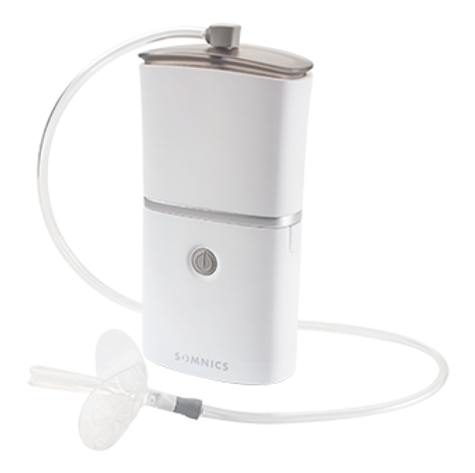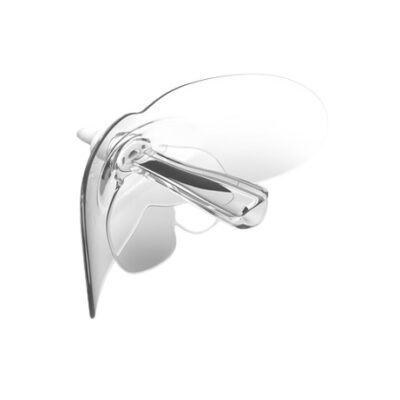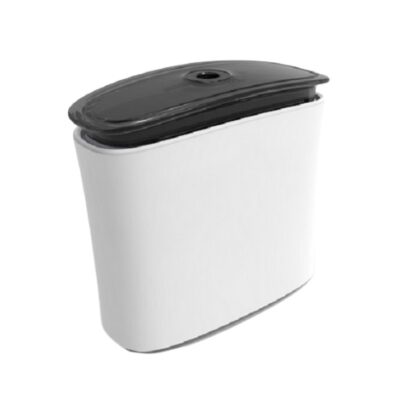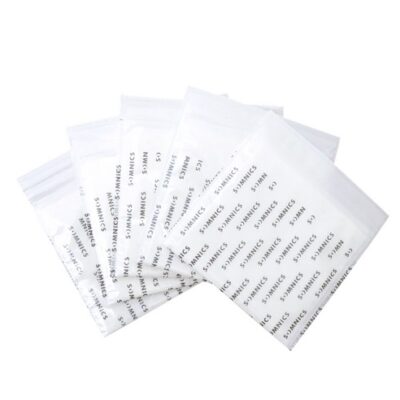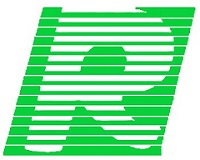Descripción
iNap® One Equipo para Terapia del Síndrome de Apnea Obstructiva del Sueño (SAOS). Nuevo tratamiento alternativo preferido por los pacientes con apnea obstructiva del sueño, sin máscara, confortable, clínicamente probado, portátil, larga autonomía.
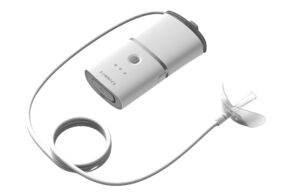
¿Qué es el SAOS?
El Síndrome de la Apnea Obstructiva del Sueño (SAOS) es un trastorno respiratorio del sueño que ocurre cuando la lengua y el tejido blando en la parte posterior de la garganta colapsa y bloquea las vías respiratorias superiores. Esto reduce la cantidad de aire que entra en los pulmones, lo que lleva a pausas en la respiración.
iNAP® One - Duerme bien. Estés donde estés.
Hasta ahora, las personas con apnea del sueño tenían que renunciar a muchas cosas. Pero este ya no es el caso. Con iNAP® One usted está entrando en una nueva era en el tratamiento de la apnea del sueño. Tanto si se encuentra en viaje de negocios en un hotel como si viaja por todo el mundo, iNAP® One le acompañará de forma segura y fiable a través de la vida.
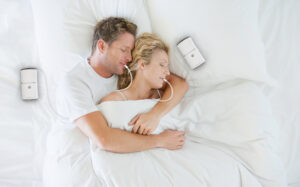
Vea esta breve introducción de sólo 1:19 minutos de iNAP® One y sus innovadoras prestaciones
¿Cómo funciona iNAP® One?
Mientras duerme iNAP® One proporciona una presión negativa (succión suave) dentro de la cavidad oral desplazando la lengua hacia el paladar superior y empuja, a la vez, el paladar blando hacia adelante alejándola de las vías respiratorias. Al estabilizar la lengua y los tejidos blandos en una posición frontal se puede mantener la permeabilidad de la vía aérea superior cerca de la faringe para proporcionar una respiración sin restricciones y un sueño ininterrumpido.
¿Cómo uso iNAP® One?
Advertencias Importantes
1) Lea por completo el Manual de Uso antes de usar el dispositivo iNAP® One
2) Utilice el dispositivo iNAP® One de acuerdo con el uso previsto indicado en esta guía
3) El asesoramiento proporcionado por el médico practicante tendrá prioridad frente a la información suministrada en esta guía
Cuando esté listo para ir a la cama, simplemente inserte en su boca el adaptador bucal conectado el tubo que proviene del equipo y clique el botón de encendido. La presión negativa intermitente de la vía respiratoria del iNAP® One elimina eficazmente la apnea manteniendo la vía respiratoria abierta permitiéndole respirar de forma natural y dormir tranquilamente. iNAP® One dispone una interfaz de usuario intuitiva con una batería recargable incorporada y un contenedor de saliva fácil de limpiar lo que lo convierte en un compañero de viaje perfecto.
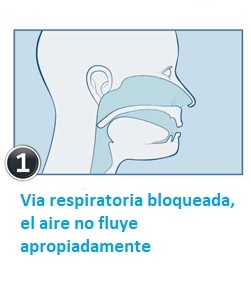
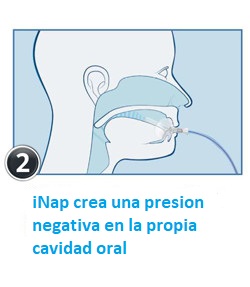
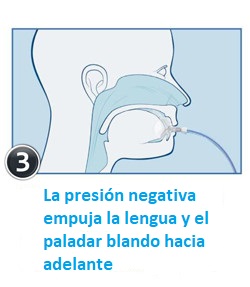
¿Cómo pongo en marcha iNAP® One?
¿Qué contiene mi caja iNAP® One?
¿Ventajas?
Nuevo tratamiento alternativo preferido por los pacientes con apnea obstructiva del sueño
Sin máscara ni casco sujeto a la cabeza
Totalmente silencioso mientras el usuario mantenga la respiración nasal
Ligera rumorosidad cuando el equipo precisa alcanzar el nivel de succión de trabajo
Confortable
Respiración nasal
Clínicamente probado
Portátil
Larga autonomía
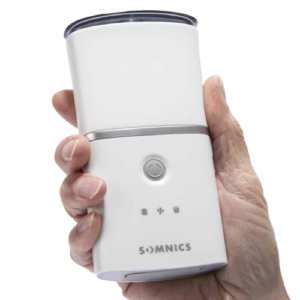
¿Es adecuado para usted?
Para adultos mayores de 18 años.
Diagnóstico de apnea obstructiva del sueño (AOS).
Problemas regulares de ronquidos intensos.
Capacidad de respirar por la nariz mientras duerme o bien tomando medidas para remediar la insuficiencia de flujo por la nariz con aerosoles o dilatadores nasales.
No estar sufriendo problemas importantes en relación con dentadura, encías o problemas nasales/sinusales.
Motivación y compromiso en lograr soluciones duraderas.
Disposición a tratar y perseverar para acostumbrarse a la nueva terapia, ello puede precisar algunas semanas. iNAP® One no es una solución rápida pero el beneficio es tener finalmente una solución de sueño que pueda funcionar para usted.
¿Cómo cambio cada día el filtro Dry Pad de mi iNAP® One?
Síntomas de la AOS
Ronquidos fuertes o frecuentes
Pausas silenciosas en la respiración
Sonidos de asfixia o jadeo
Somnolencia diurna o fatiga
Insomnio o sueño no reparador
Dolores de cabeza matutinos
Nocturia (despertar durante la noche para ir al baño)
Problemas de memoria o aprendizaje y pérdida de concentración
Disminución del deseo sexual
Irritabilidad
¿Cómo llevo a cabo una limpieza profunda de mi iNAP® One?
Consecuencias a largo plazo de la apnea del sueño no tratada:
Hipertensión
Enfermedad cardíaca
Derrame cerebral
Pre-diabetes y diabetes
Depresión
Cáncer
Fabricante
Somnics Inc. Taiwán es una empresa fabricante de dispositivos médicos que se centra en el desarrollo de tecnologías innovadoras para el tratamiento de la apnea obstructiva del sueño (AOS) y de los ronquidos. A diferencia de los dispositivos de tratamiento AOS existentes que utilizan la presión positiva continua de las vías respiratorias (CPAP), nuestro producto iNAP® One aporta un nuevo y revolucionario sistema de terapia aplicando presión negativa a la cavidad oral, proporciona una forma simple, cómoda y discreta que permite a los pacientes respirar de forma natural durante el tratamiento AOS.
Con más de 172 patentes emitidas a nivel mundial, galardones de diseño internacional y tras varios años de I+D ha culminado con lanzamiento de iNap One.
Certificaciones de Dispositivos Médicos iNAP One (NP-R07-A):
Certificado CE MD Clase IIa
Singapur HSA Dispositivo médico Registrado : DE0502677
Malasia Certificación de dispositivos médicos : GB88527353317
Lista de dispositivos médicos de Hong Kong : HKMD No. 190095
Nuestro plan de tratamiento recomendado abarca un período de 30 días. La práctica, la paciencia y la perseverancia conducirán a un cambio completo en su sueño, aliviando el sufrimiento para usted y los miembros de la familia.
Aproveche el período de evaluación de 90 días para acostumbrarse completamente a usar el sistema de terapia del sueño iNAP.
Estudios Clínicos
- Ching-Yuan Cheng, Chia-Chi Chen, Men-Tzung Lo, Christian Guilleminault and Chia-Mo Lin,»Evaluation of efficacy and safety of intraoral negative air pressure device in adults with obstructive sleep apnea in Taiwan», Sleep Medicine, Vol.81, pp. 163-168, 2021 https://www.sciencedirect.com/science/article/abs/pii/S1389945721001106?via%3Dihub
- Yamaguchi Y, “The Effect of Intermittent Negative Air Pressure, iNAP® on Subjective Daytime Sleepiness in Middle-aged Patients with Moderate Obstructive Sleep Apnea,” J. Sleep Disord. Ther., vol.9, Iss.5, no:318. 2020, http://doi.org/10.35248/2167-0277.20.9.318.
- T. C. Hung et al., “Building a model to precisely target the responders of a novel intermittent negative air pressure device-with mechanism definition”, Sleep Medicine, In Press, 2020, https://doi.org/10.1016/j.sleep.2020.03.014
- T. C. Hung et al., “A novel intermittent negative air pressure device ameliorates obstructive sleep apnea syndrome in adults,” Sleep Breath., vol. 23, no. 3, pp. 849–856, 2019, http://doi.org/10.1007/s11325-018-01778-z
- Y. Yamaguchi and M. Kato, “Pilot Study of Oral Negative Pressure Therapy for Obstructive Sleep Apnea-Hypopnea Syndrome,” J. Sleep Disord. Ther., vol. 06, no. 03, 2017, http://doi.org/10.4172/2167-0277.1000271
- M. Camacho, S. A. Song, and A. M. Tolisano, “Oral pressure therapy (winx) for obstructive sleep apnea: a meta-analysis updating the systematic review,” Sleep Breath., vol. 20, no. 3, pp. 1011–1012, 2016, http://doi.org/10.1007/s11325-016-1350-z
- G. Nigam, C. Pathak, and M. Riaz, “Effectiveness of oral pressure therapy in obstructive sleep apnea: a systematic analysis,” Sleep Breath., vol. 20, no. 2, pp. 663–671, 2016, http://doi.org/10.1007/s11325-015-1270-3
- R. J. Schwab et al., “Examining the Mechanism of Action of a New Device Using Oral Pressure Therapy for the Treatment of Obstructive Sleep Apnea,” Sleep, vol. 37, no. 7, pp. 1237–1247, 2014, http://doi.org/10.5665/sleep.3846
- I. M. Colrain et al., “A multicenter evaluation of oral pressure therapy for the treatment of obstructive sleep apnea,” Sleep Med., vol. 14, no. 9, pp. 830–837, 2013, http://doi.org/10.1016/j.sleep.2013.05.009
- J. G. Park, T. M. Morgenthaler, and P. C. Gay, “Novel and emerging nonpositive airway pressure therapies for sleep apnea,” Chest, vol. 144, no. 6, pp. 1946–1952, 2013, http://doi.org/10.1378/chest.13-0273
- M. Farid-Moayer, L. C. Siegel, and J. Black, “Oral pressure therapy for treatment of obstructive sleep apnea: Clinical feasibility,” Nat. Sci. Sleep, vol. 5, pp. 53–59, 2013, http://doi.org/10.2147/NSS.S44736
- Farid-Moayer M, Siegel LC, Black J. A feasibility evaluation of oral pressure therapy for the treatment of obstructive sleep apnea. Ther Adv Respir Dis, 2013, 7:3-12. http://doi.org/10.1177/1753465812468043.
- D. A. Barone, “Alternative devices for obstructive sleep apnea,” Neurol. Clin. Pract., vol. 3, no. 1, pp. 67–70, 2013, http://doi.org/10.1212/CPJ.0b013e318278be88
Conferencias / Congresos
- Georg N et al., A Multi-center, Two-stage, Single-arm, Prospective, First-night Order Cross-over, Evaluator-blind Study to Evaluate the Efficacy, Safety and Tolerance of the iNAP® Sleep Therapy System in Adults with Obstructive Sleep Apnea. 28th DGSM (Deutschen Gesellschaft für Schlafforschung und Schlafmedizin), 2020, Germany.
- Chia-Chi. Chen, Chen Lin, Chia-Mo Lin, Titration of the intra-oral negative air pressure in treating the patient with obstructive sleep apnea, European Respiratory Society (ERS) International Congress 2020
- Georg N et al., A Multi-center, Two-stage, Single-arm, Prospective, First-night Order Cross-over, Evaluator-blind Study to Evaluate the Efficacy, Safety and Tolerance of the iNAP® Sleep Therapy System in Adults with Obstructive Sleep Apnea (OSA)–AN INTERIM ANALYSIS. 27th DGSM (Deutschen Gesellschaft für Schlafforschung und Schlafmedizin), 2019, Germany.
- Liu CL et al., Intra-oral negative pressure therapy in patients with obstructive sleep apnea: upper airway imaging in responders vs. nonresponders. Sleep DownUnder, 2019, Australia.
- Li HY et al., CPAP離脱者への対応 – How do we manage CPAP failure? 日本睡眠学会第44回定期学術集会, 2019, Japan.
- Lin CM et al., A Single-center Cross-over and Evaluator-blind Pivotal Study to Evaluate the Efficacy and Safety of intraoral Negative Air Pressure Device in Adults with Obstructive Sleep Apnea. 33rd Annual Meeting of the Associated Professional Sleep Society, 2019, United States.
- Liu TJ et al., Upper Airway Imaging of Patients with Obstructive Sleep Apnea under Treatment of a Novel Intra‐Oral Negative Pressure Device. 10th International Surgical Sleep Society Meeting, 2019, United States.
- Liu CL et al., The effective rationale of a novel intra-oral negative pressure device for obstructive sleep apnea. Sleep DownUnder, 2018, Australia.
- Liu TJ et al., Follow-up Reports on Intraoral Negative Air Pressure Device Treated Patients Underwent Obstructive Sleep Apnea Uvulopalatopharyngoplasty. 9th International Surgical Sleep Society Meeting, 2018, Germany.
- Hang LW et al., Treatment Outcomes and Safety of a Novel Intraoral Negative Air Pressure Device in the First-in-Man Study. 2nd Congress of Asian Society of Sleep Medicine, 2018, South Korea.
- Liu TJ et al., Imaging and Treatment Outcomes of the iNAP® Sleep Therapy System in the Feasibility Study in Taiwan. 14th Taiwan Japan Conference on Otolaryngology Head and Neck Surgery, 2017, Taiwan.
- Liu TJ et al., An Oral Negative Pressure Device for Treatment Obstructive Sleep Apnea (OSA). 25th DGSM (Deutschen Gesellschaft für Schlafforschung und Schlafmedizin), 2017, Germany.
- Lin CM et al., A Multicenter Pilot Study on the Indications of the Negative Pressure Sleep Therapy System for the Treatment of Obstructive Sleep Apnea. A Joint Congress of World Association of Sleep Medicine and World Sleep Federation, 2017, Czech Republic.
- Liu TJ et al., Imaging and Treatment Outcomes of the iNAP® Sleep Therapy System in the Feasibility Study in Taiwan. Network of Asia-Pacific Sleep Specialists, 2016, United States.
- Lin CM et al., Clinical Efficacy and Safety Evaluation of a Novel Negative Pressure Therapy System for Treatment of Obstructive Sleep Apnea Adult Patients. 4th International Pediatric Sleep Association Congress in conjunction with the 14th annual meeting of Taiwan Society of Sleep Medicine, 2016, Taiwan.
- Liu TJ et al., Safety and Effectiveness of Intraoral Pressure Gradient Device for Obstructive Sleep Apnea Patients. 6th World Congress on Sleep Medicine, 2015, South Korea.
- Liu TJ et al., Preliminary result of an oral negative pressure device for treatment obstructive sleep apnea (OSA). 13th Asia-Oceania ORL-HNS Congress, 2015, Taiwan.
- Emsellem HA et al., Safety and effectiveness of oral pressure therapy with a new oral interface. Sleep, 2014, 37(abstr suppl):A146(4017).
- Colrain IM et al., Safety and effectiveness of oral pressure therapy: 3-month treatment evaluation. Am J Respir Crit Care Med, 2013, 187:A2119.
- Patel SR et al., Am J Respir Crit Care Med, 2013, 187:A3752.
- Colrain IM et al., Compliance with oral pressure therapy for treatment of obstructive sleep apnea. Sleep, 2013, 36(abstr suppl):A138(0391).
- Colrain IM et al., Oral pressure therapy for obstructive sleep apnea in subjects without prior treatment experience. Sleep, 2013, 36(abstr suppl):A175(0504).
- Colrain IM et al., Oral Pressure Therapy: a new treatment for obstructive sleep apnea. Sleep and Biological Rhythms, 2013, 11 (S2):29-30.
- Malhotra A, et al., Oral pressure therapy improves obstructive sleep apnea. Am J Respir Crit Care Med, 2012, 185:A6810.
- Schwab RJ et al., Mechanism of action of a novel device using oral pressure therapy (OPT) for the treatment of OSA. Am J Respir Crit Care Med, 2012, 185:A6811.
- Colrain IM et al., A multicentre evaluation of oral pressure therapy for the treatment of obstructive sleep apnoea: sleep architecture effects. J Sleep Res, 2012, 21(Suppl 1):P696.
- Colrain IM et al., A Multi-Centre Evaluation of Oral Pressure Therapy for the Treatment of Obstructive Sleep Apnoea. J Sleep Res 2012, 21(Suppl 1):P697.
- Schwab RJ et al., Examining the mechanism of action of a new device using oral pressure therapy for the treatment of obstructive sleep apnea. J Sleep Res, 2012, 21(Suppl 1):O310.
Patentes
iNAP sleep therapy system and/or the use thereof in a method may be covered by one or more U.S. and/or foreign patents, including: US 7,918,222, US 8,567,406, US 8,616,208, US 9,138,342, US 9,387,117, US 9,339,620, US 10,080,855, US 10,149,782, US 10,149,783, US 10,159,595, US 10,166,140, US 8,122,889, US 8,656,922, US 8,667,970, US 9,241,825, US 9,655,768, US 8,505,540, US 9,610,190, US 8,074,656, US 8,122,890, US 8,701,672, US 8,387,620, US 9,387,118, US 9,387,119, US 10,117,773, US 8,402,973, US 8,573,223, US 8,979,823, US 9,549,795, US 9,101,495, US 9,375,541, US 9,763,759, US 9,483,792, US 15,376,368, EP 1862152, EP 2301490, EP 2347739, EP 2353555, EP 2868298, EP 2943170, EP 3095421, EP 2881090, EP 2209433, EP 2939634, EP 2605722, EP 0029004490001 RCD, EP 0029004490002 RCD, DE 2015121115024300, JP 5399534, JP 5727574, JP 5651488, JP 6002798, JP 6242914, JP 6346997, JP 6357573, JP 5404642, JP 5952817, JP 59944828, KR 10-1636436-0000, KR 10-1661639-0000, AU 2014205191, AU 2015399751, VN 3-2016-00928, VN 3-2016-00929, ID A00201601834, ID A00201601835, SG 30201602584Y, SG 30201602585X, TH 1602002134, TH 1602002135, IN 283925, IN 283926, CN 100506190, CN 102028574, CN 102133141, CN 102144946, CN 103989550, CN 103976814, CN 104000680, CN 104519841, CN 104540480, CN 104427958, CN 106170272, CN 205494125, CN 101917924, CN 103687568, CN 103140192, CN 103717181, and CN 201721828424.2 Other U.S. and foreign patent applications are pending.

